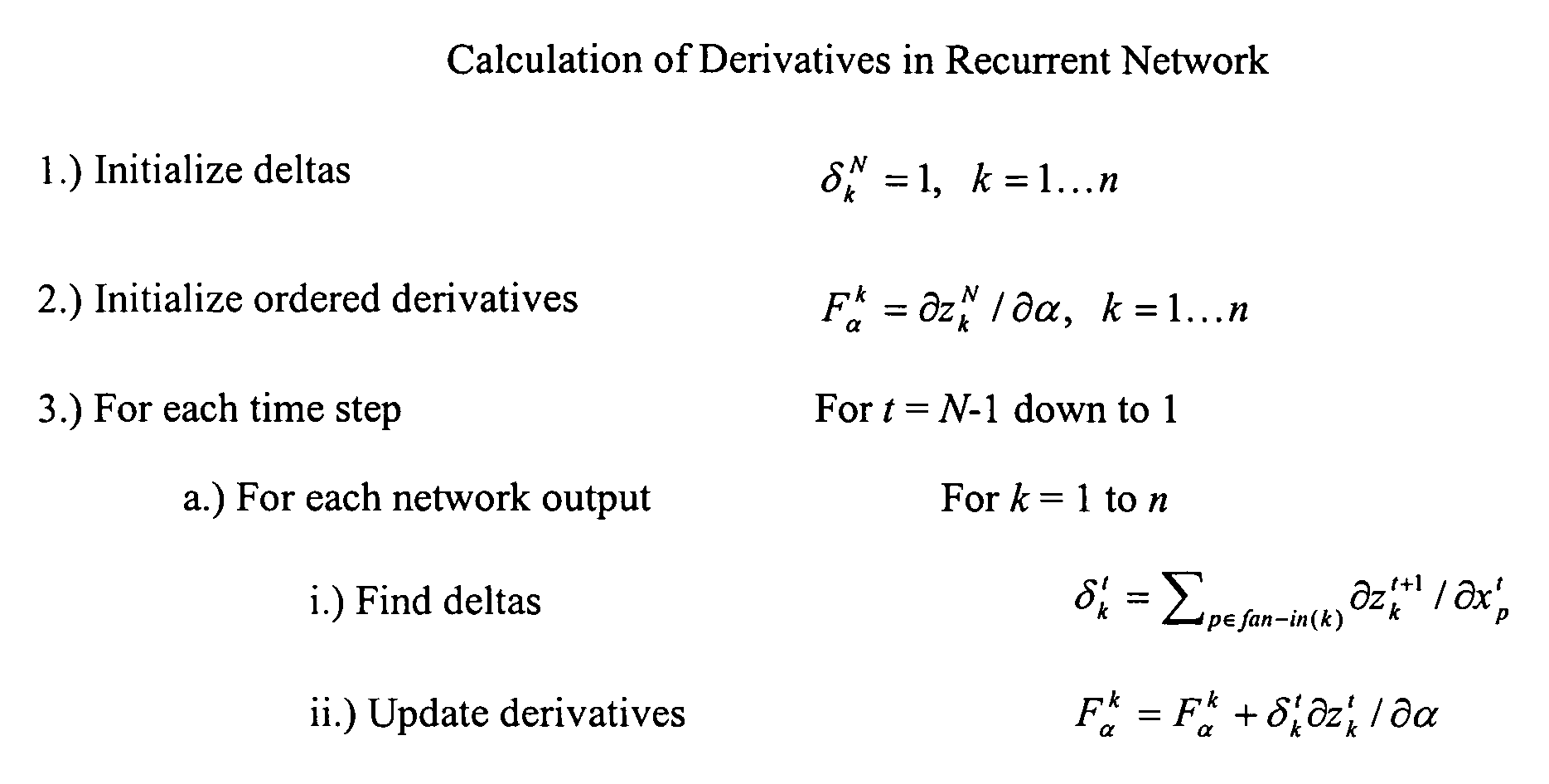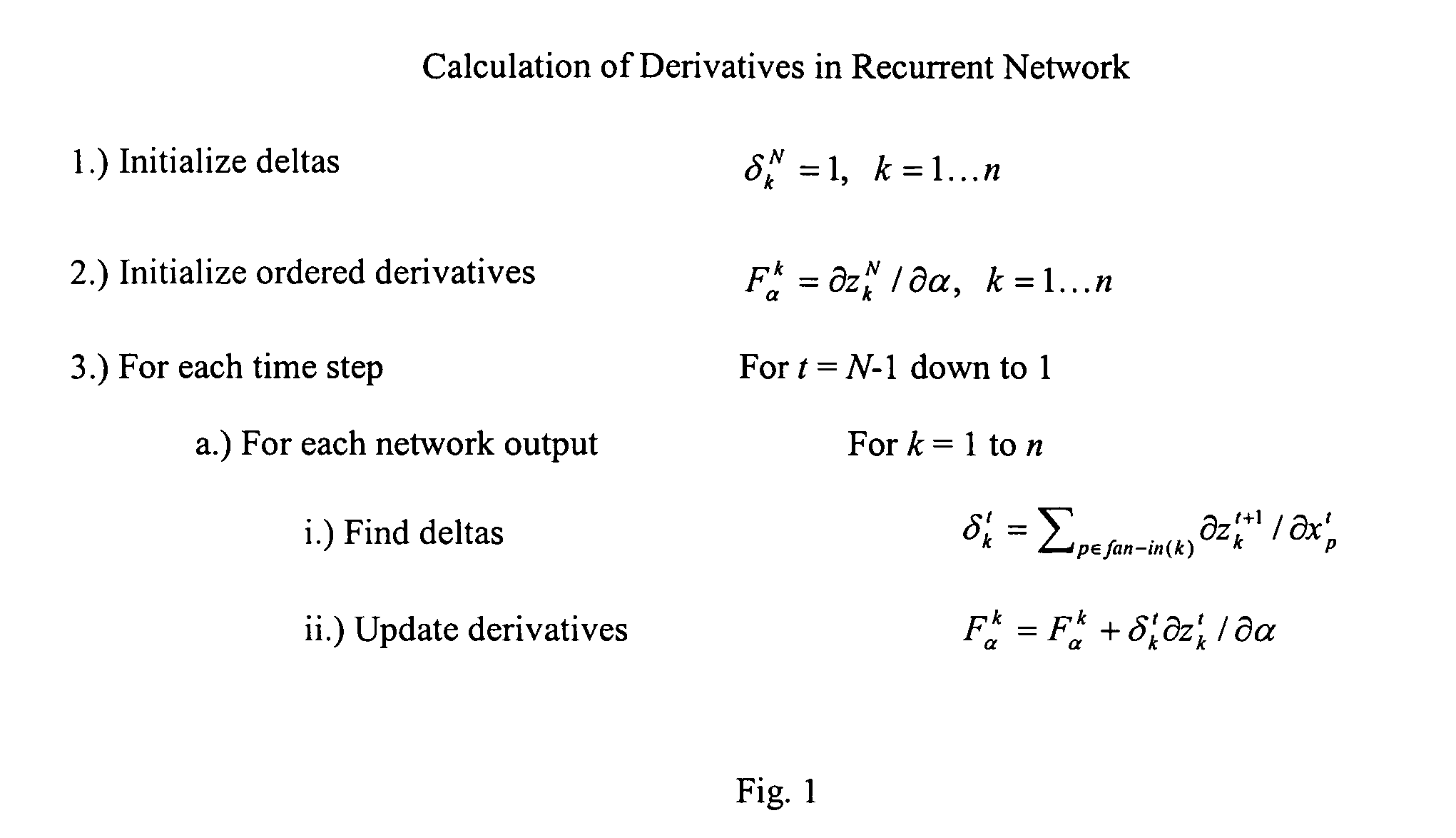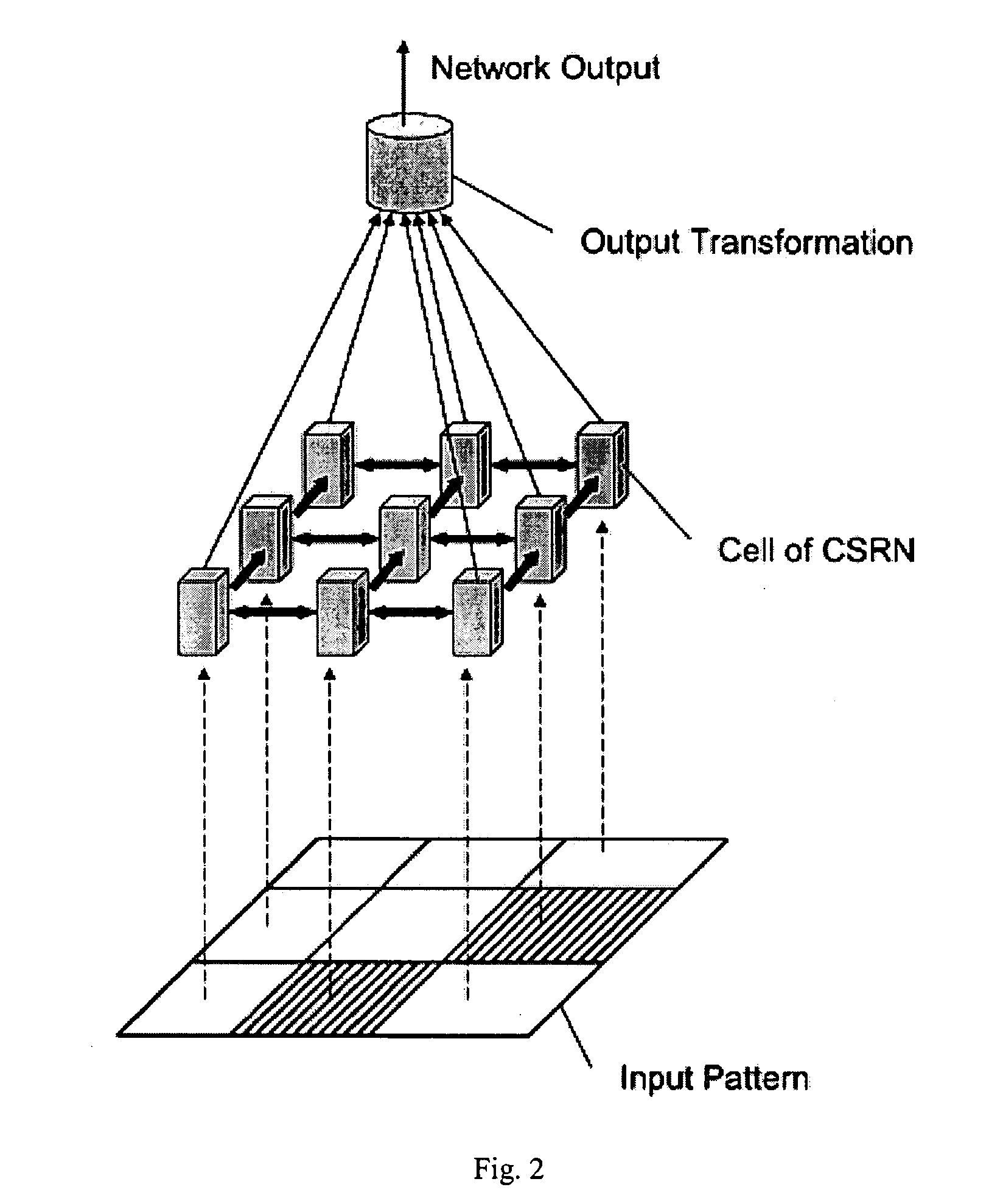Methods of improved learning in simultaneous recurrent neural networks
a neural network and neural network technology, applied in the field of artificial intelligence and machine learning, can solve the problems of inability to solve problems fundamentally not true, difficult training and even impracticality in most nontrivial cases, and inability to train perceptrons
- Summary
- Abstract
- Description
- Claims
- Application Information
AI Technical Summary
Problems solved by technology
Method used
Image
Examples
Embodiment Construction
[0026]The present invention provides a cellular simultaneous neural network (CSRN) architecture. Some embodiments of the invention are subsets of a more generic architecture, Object Net. Neurodynamics of Cognition &Consciousness 120 (L. I. Perlovsky & R. Kozma, eds. 2007). An extended Kalman filter (EKF) methodology is used for training the neural networks. For the first time, an efficient training methodology is applied to the complex recurrent network architecture. The invention herein addresses not only learning but also generalization of the network on two problems: maze and connectedness. Improvement in speed of learning by several orders of magnitude as a result of using EKF is also demonstrated.
Backpropagation in Complex Networks
[0027]The backpropagation (BP) algorithm is the foundation of NN applications. P. Werbos, Backpropagation through time: What it does and how to do it, 78(10) Proc. IEEE 1550-60 (October 1990); P. Werbos, Consistency of HDP applied to a simple reinforc...
PUM
 Login to View More
Login to View More Abstract
Description
Claims
Application Information
 Login to View More
Login to View More - R&D
- Intellectual Property
- Life Sciences
- Materials
- Tech Scout
- Unparalleled Data Quality
- Higher Quality Content
- 60% Fewer Hallucinations
Browse by: Latest US Patents, China's latest patents, Technical Efficacy Thesaurus, Application Domain, Technology Topic, Popular Technical Reports.
© 2025 PatSnap. All rights reserved.Legal|Privacy policy|Modern Slavery Act Transparency Statement|Sitemap|About US| Contact US: help@patsnap.com



